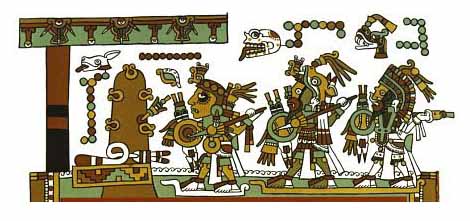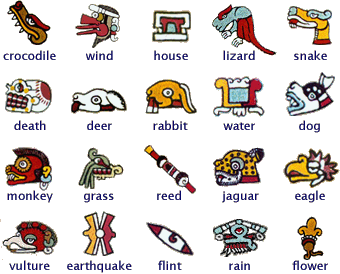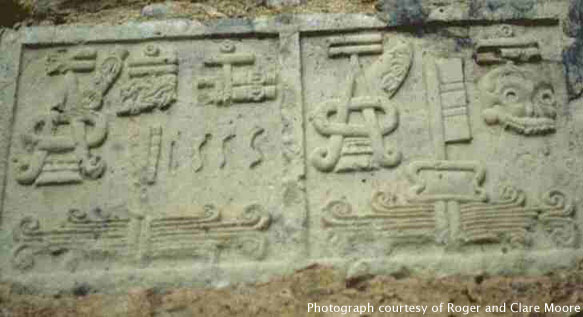
The symbolism and iconography of writing systems found throughout the ancient world are fascinating, but none more than those that evolved in ancient Mesoamerica. Developing independently of Mediterranean or Asian cultures, there are several different types of pre-conquest writing that represent a unique intellectual achievement in this part of the new world.
The Mixtecs were one of the most influential ethnic groups to emerge in Mesoamerica during the Post-Classic. Never an united nation, the Mixtecs waged war and forged alliances among themselves as well as with other peoples in their vicinity. They also produced beautiful manuscripts and great metal work, and influenced the international artistic style used from Central Mexico to Yucatan.
During the Classic period, the Mixtecs lived in hilltop settlements of northwestern Oaxaca, a fact which is reflected in their name in their own language, Nuudzahui, meaning "People of the Rain". Later, during the Post-Classic, the Mixtecs slowly moved into adjacent valleys and then into the great Valley of Oaxaca. This time of expansion is no doubt recorded in a large number of deerskin manuscripts, only eight of which have survived. Nevertheless, these manuscripts allow us to trace Mixtec history from 1550 CE back to 940 CE, deeper in time than any other Mesoamerican culture except the Maya.
Even though surrounded by more textual writing systems, the Mixtecs opted to write in a more minimalistic manner. Mixtec "writing" is really an amalgam of written signs and pictures. In particular, pictorial scenes would depict historical events such as birth, marriage, coronation, war, and death, while written glyphs would record the date of the event and identify the people and places involved.

The above example came from the Codex Zouche-Nuttall. It depicts a group of warriors conquering a town (an event noted by the warriors' drawn weapons and the arrow piercing the hill). You might notice glyphs with dots above each of the participants in the scene. The logical conclusion is that the glyphs are names, but in fact these are calendrical day signs. The reason for this is that among Mixtec nobles, a person's name is often his or her birthday.
Like other Mesoamerican cultures, the Mixtec used a 260-day sacred calendar. A day is a combination of a number, called the coefficient, and a day sign. The coefficient ranges from 1 to 13, while the day sign is any of the following 20 glyphs:

Unlike the Western system of months and days, the Mesoamerican sacred calendar moves the coefficient AND the day sign in parallel. You start with 1 Crocodile, then you move ahead both the number and the day sign, going to 2 Wind on the next day. You keep going until you end up with 13 Reed, then you rewind the numbers but continue with the day sign, hence yielding 1 Jaguar. When you've exhausted all day signs and you're at 7 Flower, you rewind the day signs to Crocodile but continue with the number, giving you 8 Crocodile.
Another interesting note is that Mixtecs did not use the bar to represent the quantity 5 in manuscripts, but instead used five dots. However, on monumental inscriptions, they did use the bar notation instead of five dots (see below).
The Mixtecs also had a 365-day solar calendar, but they did not record dates in this calendar. Instead, they interlocked the solar and the sacred calendars into the Calendar Round, a 52-year cycle commonly used in Mesoamerica. (Here's the math: the smallest number divisible by both 365 and 260 is 18980, which is 52 years.) Historical events in Mixtec manuscripts and monuments are dated by a year in the Calendar Round and a day in the sacred calendar.
Like the sacred calendar days, years in the Calendar Round are also composed of a number and a year sign. The number ranges from 1 to 13, and there are 4 year signs (hence yielding 52 years). The year sign is always infixed inside a glyph that scholars call the AO sign because it looks the letters A and O entertwined.

The four year signs are taken from the sacred calendar. They are rabbit, reed, flint, and house. The following are examples of year signs with coefficients:

